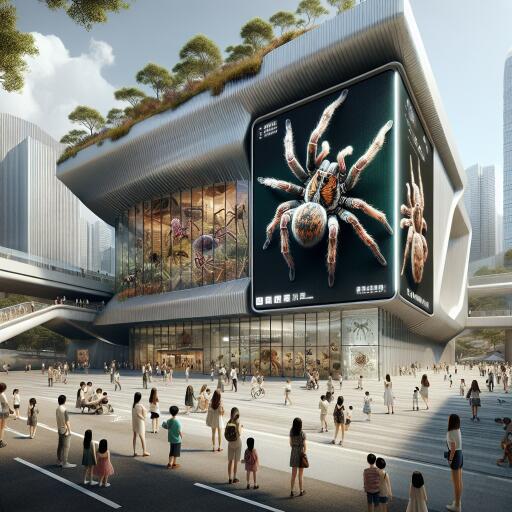
Hong Kong’s New Mission: Embracing Spiders to Enhance Ecological Consciousness
In an ambitious move to shift public perception and foster greater appreciation for biodiversity, the Hong Kong Biodiversity Museum is taking a stand against the common misgivings surrounding spiders, showcasing their crucial role within ecosystems and their fascinating attributes. The museum, notably spotlighting the impressive abilities of spiders, such as their remarkable jumping prowess and acute vision utilized in prey capture, aims to dispel fears and encourage a more profound respect for these often misunderstood creatures.
Despite their vital ecological contributions, spiders frequently fail to receive the recognition they deserve. A landmark 2017 study illuminated the staggering volume of prey consumed by the global spider population annually, tallying between 400 to 880 million tonnes. This figure not only parallels but in some cases, surpasses the human consumption rate of meat and fish. Through their dietary habits, spiders play a pivotal role in regulating insect and arthropod populations, thereby maintaining the delicate balance of ecosystems. Furthermore, they serve as an essential food source for a myriad of animals including birds, frogs, lizards, and geckos.
The museum’s founding director, highlighted the transformative power of education in altering public attitudes towards these eight-legged beings. Through interactive exhibits and detailed expositions, the museum endeavors to unveil the beauty and diversity of spiders, challenging prevalent biases and opening visitors’ eyes to the wonders of the arachnid world. Reports from visitors already indicate a shift in perception, with many expressing newfound interest and appreciation for spiders encountered in their natural habitats.
Since its inception in May 2021, operating out of what was once a mere storage room, the museum has welcomed over 36,000 visitors. These include both local residents and tourists from neighboring regions. The director, who also serves as an associate professor at the University of Hong Kong’s School of Biological Sciences, harbors aspirations for the museum’s expansion. The goal is to not only increase the display of its extensive collection, which comprises over 50,000 specimens, but also to enhance its role as a crucial biobank for the preservation of species diversity in Hong Kong and across Asia.
Interestingly, the museum benefits from evolving perceptions towards taxidermy, receiving donations from individuals looking to part with their collections responsibly. This trend reflects a broader shift in societal attitudes towards the ownership and display of animal specimens, with many preferring to see these preserved in educational institutions rather than personal spaces. The museum firmly discourages hunting for the purpose of collection, advocating for a respectful and sustainable relationship with nature.
Historically, stuffed turtles and tortoiseshell products were symbols of wealth and status, particularly in countries like China, Vietnam, and Japan. However, as attitudes shift, such displays are increasingly regarded as inappropriate, signaling a growing recognition of the importance of preserving wildlife. The museum plays a critical role in this changing landscape, providing a space where once-coveted specimens can serve as educational tools, helping to foster a deeper understanding and appreciation of biodiversity.
Through its efforts, the Hong Kong Biodiversity Museum not only seeks to educate but also to inspire a shift in the collective consciousness towards more sustainable and respectful interactions with the natural world. By illuminating the intricate beauty and ecological importance of often overlooked species, the museum aims to cultivate a more informed and empathetic public, ready to advocate for the conservation of biodiversity.





Leave a Reply